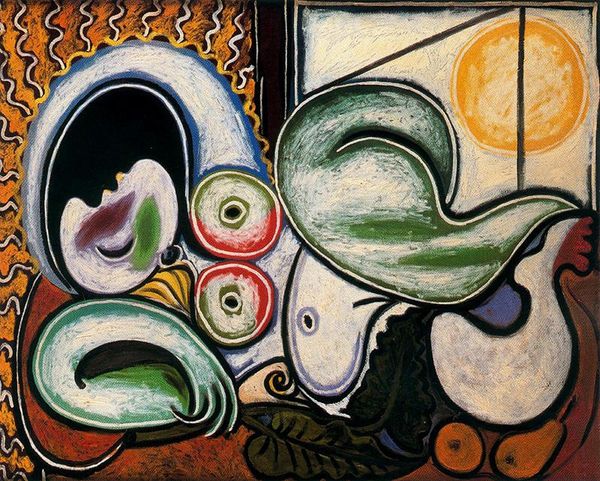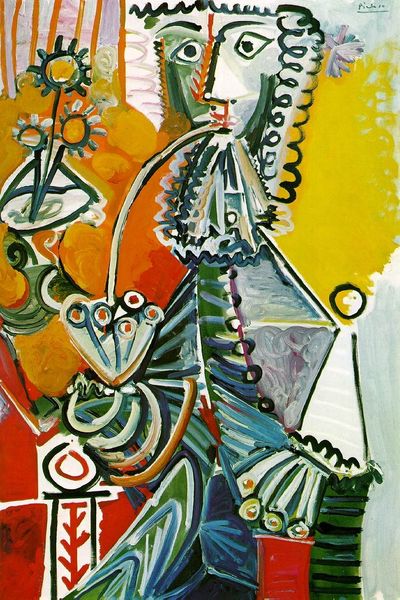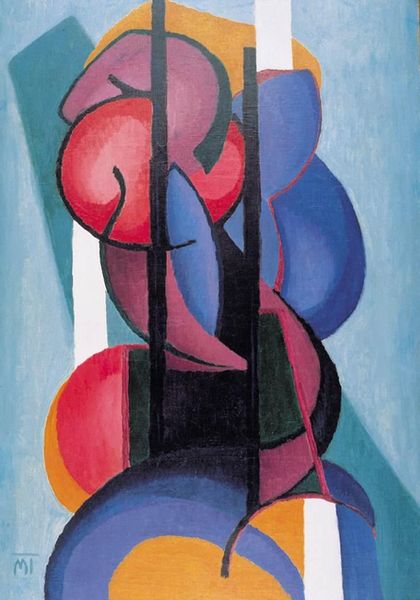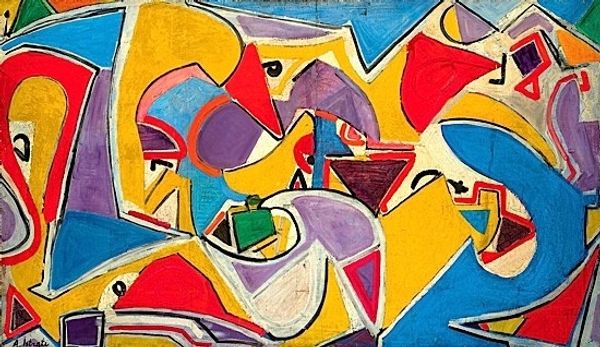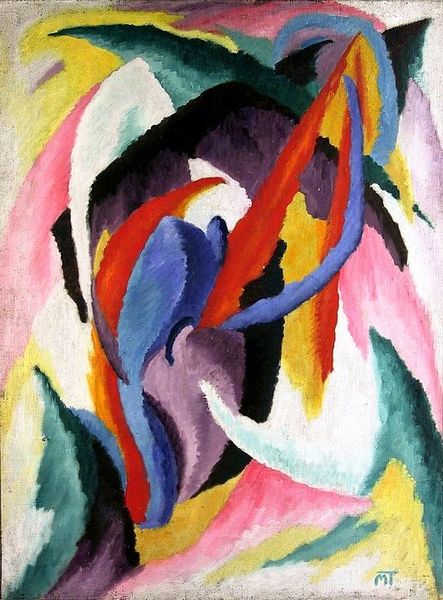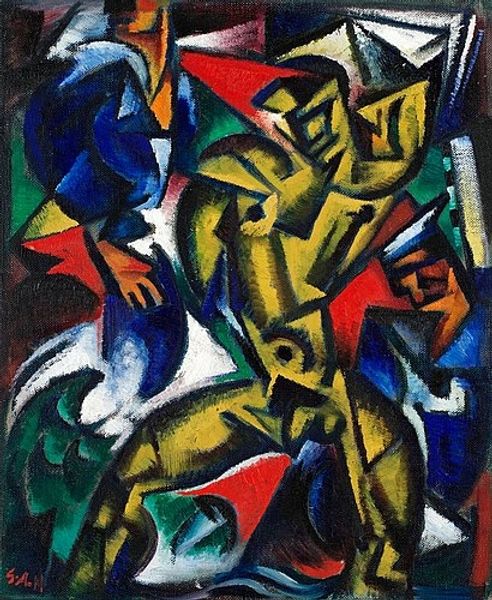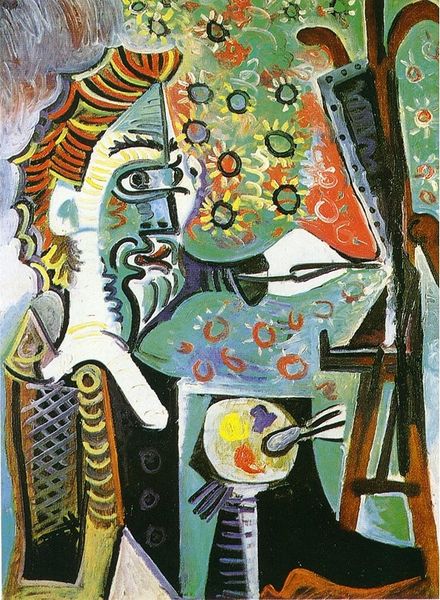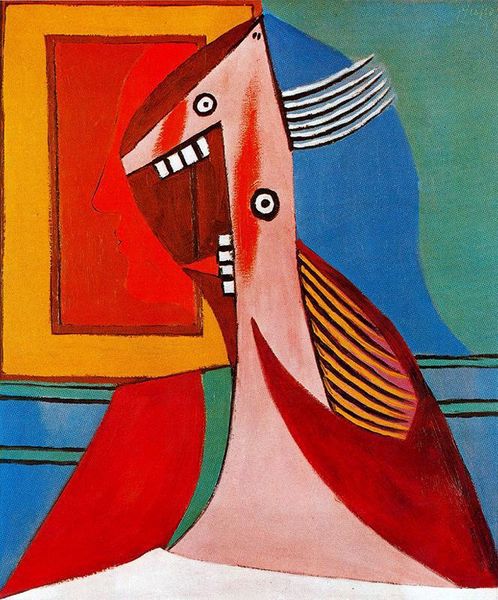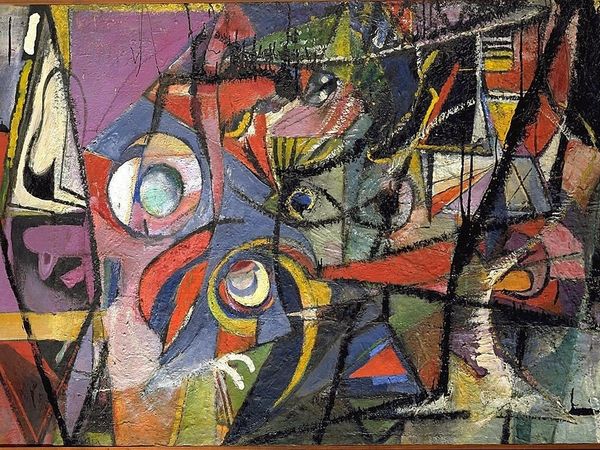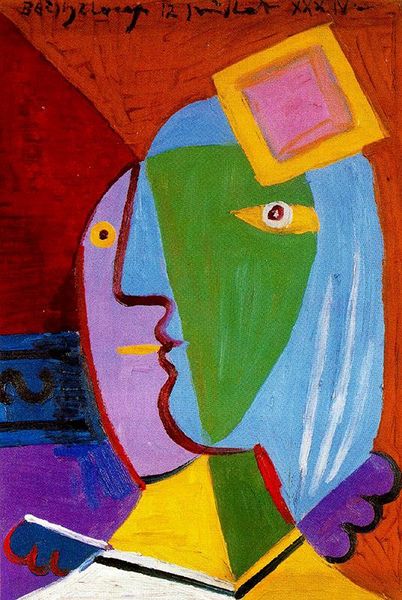
painting, oil-paint
#
cubism
#
painting
#
oil-paint
#
pop art
#
geometric-abstraction
#
abstraction
Dimensions: 195 x 130.5 cm
Copyright: Pablo Picasso,Fair Use
Curator: Before us hangs Pablo Picasso's "Great Still Life on a Pedestal," painted in 1931. The work currently resides at the Musée Picasso in Paris. Editor: It’s immediately striking. The painting's assertive lines and jarring colors—the yellows, reds, and purples—clash and harmonize simultaneously. It's bold. Curator: Precisely. The still life genre throughout art history served, predominantly, to celebrate themes such as life, wealth, vanitas... Picasso subverts all expectations with a vibrant, flattened style. The visible, deliberate brushstrokes draw attention to its status as an object made through labor, by an artist's hand. Editor: And those materials! This isn't delicate porcelain or gleaming metal. This is oil paint, applied thickly, to a canvas, probably stretched in a studio and acquired through some market or exchange. These things matter, not just the representation of refined items. The history of still lifes often valorizes high societal standards and consumption. Picasso reframes the scene through these abstract choices. Curator: Indeed. Consider how the domestic sphere—often policed and gendered—becomes a site of visual deconstruction. How can we, then, understand the flattening of perspective and the distorted shapes as a challenge to traditional notions of bourgeois stability, the conventional domestic ideals represented by those earlier still lives? This also invites analysis through post-structuralist means... Editor: I think so. You bring up important themes of labour, display, and consumption, all visible through an abstract lens. The act of depiction is also a work of material translation, revealing, in the abstraction, certain economic structures and histories... Curator: This is not about mere depiction but engaging the socio-political history of the genre. Thanks for your brilliant take on Picasso, which I also think holds significance and resonates into our world. Editor: Indeed. The history of art always evolves based on social history, class, gender, economy, materiality, or deconstruction to reflect various ideologies. Thanks!
Comments
No comments
Be the first to comment and join the conversation on the ultimate creative platform.
